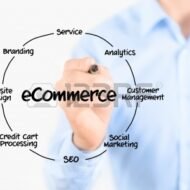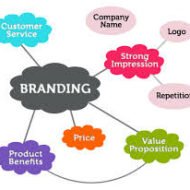Posted by Managementguru in Economics, Principles of Management, Project Management, Strategy
on Mar 11th, 2014 | 0 comments

E-Commerce Business Models – Highly Recommended Internet User Statistics in India: 100 Million unique internet users 25 Million Facebook users 20 Million Youtube users 10 Million tweeters Ecommerce market size: 46520 Crores Role of Trade and Commerce: Trade and commerce play a decisive role in boosting up a country’s economy. An economy is said to expand only when a country concentrates on bringing a radical change in its commercial activities. Needless to say, the invention of computers and computer based services, has revolutionized the industry of commerce, where trading is done online. The emergence of “E-Commerce” is a real benefit bestowed on the traders to sell their merchandise in a popular platform called internet. E-commerce has overturned the history of retail selling market, due to the unanimous support of the consumers. Lifestyle Changes: The changing life styles of consumers have led to the evolution of e-commerce as an appealing alternative to terrestrial retail network. Everything has been made simple and easy. All kinds of services are available for the consumer at a mouse click’s distance. Internet gives him the privilege and liberty to happily surf through the net, from the cool confines of his house, to finalize and order a product or service of his choice. Payment systems are again made easy, through PayPal or credit or debit cards, electronically verified and authorized. So, why would consumers wait in a long queue to avail a specific service or drive down to the market place for purchasing their merchandise anymore, when e-commerce presents them all in a platter at their door steps? The Internet – Virtual Market Place: Internet serves as the virtual market place, where exchange of goods and services are quick and convenient. Many big corporate companies have started selling their products online, to manage the stiff competition posed by other competitors and small online vendors. Online presence is necessary to accelerate your profits and retain your market share. Through e-commerce, you also stand a chance to win over the interests of various sections of a society because of global internet penetration. The following list would give you a fair idea about the extensive penetration of e-commerce cutting through various economic layers. You can compete globally with other big merchants, as this is a virtual market arena, devoid of any geographical boundaries. Your prerequisite would be a computer terminal with high speed internet connection and a valid bank account. Electronic fund transfer through Real Time Gross Settlement and Net Banking, through which you are able to receive and transfer funds immediately. Online business works round the clock, so you are accessible 24/7, that really helps you to increase your sales and thus your profit margins. There is no need for credit sales, until and unless you have a dealer network to which you have to extend credit facilities. Payment of tax, electricity bills, telephone bills are now made online through the internet. Firms are able to cut down their costs, in terms of infrastructure, marketing, holding inventory, customer relationship management, information processing etc. , The highlight is, you also get instant feedback on the price and other features of your product or service, that helps you to employ pricing and promotional strategies. Travel industry, consumer electronics, shipping industry, Companies producing fast moving consumer goods, car rentals and so many other industries are thriving in the web market, thanks to e-commerce. Talking about the shortcomings, I must say that internet has not touched millions of people yet across the globe, to enable them to enjoy the benefits and privilege of this new economic system-commerce may not suit certain sectors of business like perishable food items, where time is an...

Posted by Managementguru in Business Management, Marketing, Principles of Management
on Mar 4th, 2014 | 0 comments

Trends in Consumer Marketing FMCG’s: Consumer marketing is defined as creating and selling products, goods and services to individual buyers, as opposed to trying to appeal to businesses. You would have often heard about this – Fast moving consumer goods. These are nothing but products that are destined for use by ultimate customers or households that cannot be done with, as their usage is on a day to day basis. It might make some sense if I cite some examples – toothpaste, soaps, shaving creams, talcs, body lotions; these are meant for personal consumption and the demand for such products is direct and needs less of relationship marketing. Brand Focus: The number of customers in the consumer market is relatively large and the product purchase is influenced by even emotional factors. The focus is on the brand name and some people ardently follow a particular brand for ages, and this might be attributed to the effect that has been created by mass media advertising, or it might be due to the fact that they might identify themselves in some or the other with the product. It becomes a personal companion over a period of time. Impulse Buying: The decision making process is informal and often simple. Sometimes, it is influenced by the budget equations and feasibility. Impulse buying is also common in consumer market. At times, the consumers go adventurous and like to try their hands on new products. Branding is an important feature that retains the customer base for business firms and that’s why market analysts are attaching so much of significance to advertisements and sales promotions, to make their product a household name. Distribution Network: The firms must have a pucca distribution network linking different parts of the territories, where they want to expand their market. Say, for instance, a soft drink can be made popular by branding, but if there is no sufficient supply in the market, how do you expect customers to support your product? Equally important is providing the customers with a product size that best suits their budget. Consumer Marketing Infographic: Researchomatic.com Market Segmentation: Market segmentation recognizes the existence of distinct market groups, each with a distinct set of needs. Through segmentation, the firm directs its product and promotional efforts towards those markets that will benefit most from or will get the greatest enjoyment from its merchandise. Over the years, segmentation has become a popular strategic technique as the market is ever flushed with competitors. Influence of Price: A number of sellers are seen in this kind of consumer market and it is only the market that decides the price and not the participants. The marketers have nothing to lose if they sell at the market price, but if they plan to sell at slightly higher price levels than that of the market, it will prove detrimental to their objective. https://www.businessmodelscholar.com/wp-content/uploads/2020/06/3.pdf They are only price takers and not price makers. But they have the leverage to freely enter and exit the market. If the consumers foresee a fall in the general price levels of a product, they wait for some more time to take full advantage of the situation and decide to postpone the purchase. If the market shows an increasing price trend, it is the other way round, either they buy in bulk or go for substitutes.Say, if the price levels of coffee is on the rise, people opt for tea. Demand for consumer goods is price elastic. Consumers don’t care for much technical specifications; they only care for the quality backed up by a strong brand name. Post by Free MBA...




